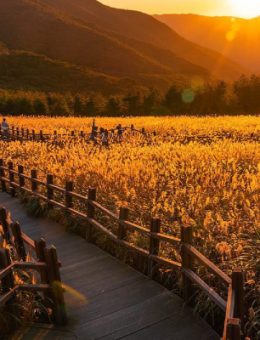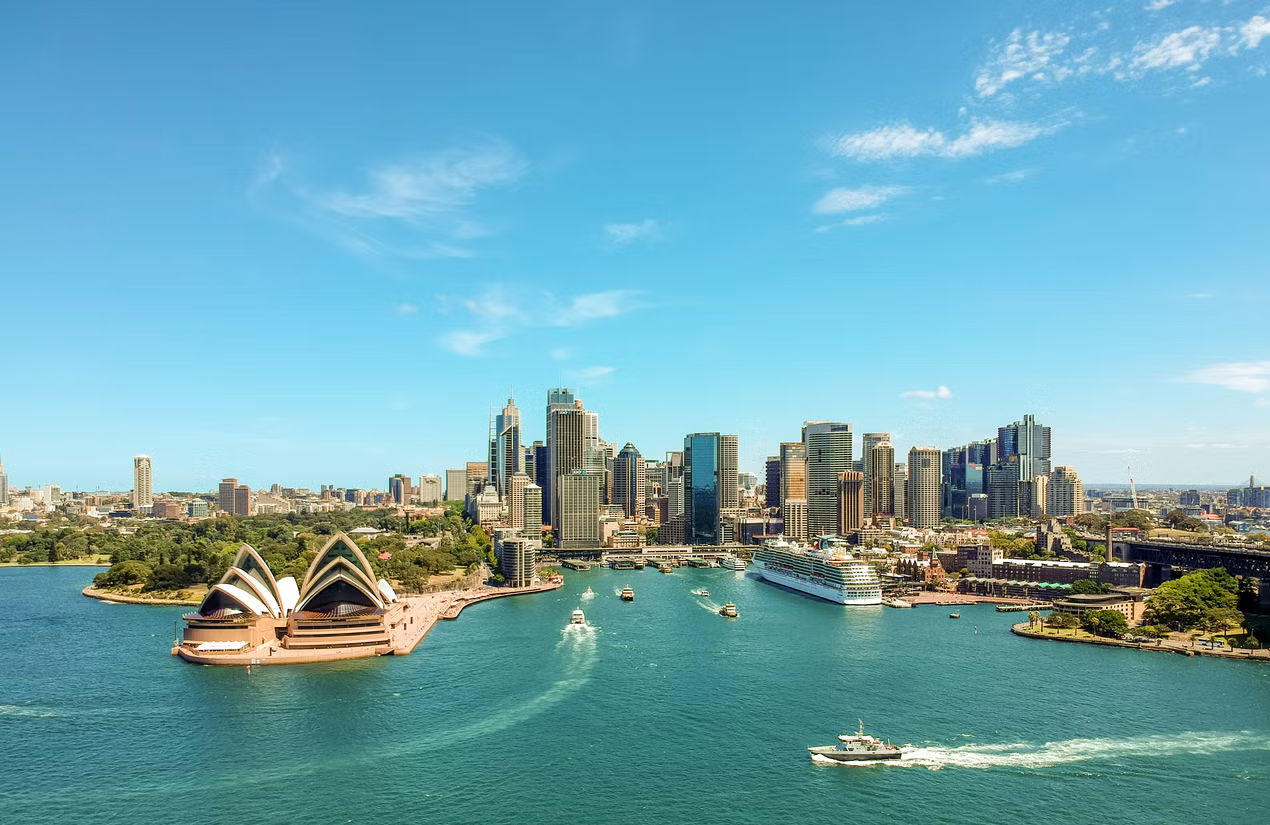Beyond exploring famous landmarks, one spot that sparks curiosity among travelers to the Netherlands is its red light districts. The Dutch government has long legalized these areas, allowing prostitution to operate within a safe and lawful framework. This unique approach draws many visitors who can’t resist the urge to see what these districts are all about. So, what makes the Netherlands’ red light districts special, how do they function, and what should you know before visiting? Let’s dive into the details.
Table of Contents
- 1. Where Is the Red Light District in the Netherlands?
- 2. What Activities Are There to Enjoy?
- 2.1. Experiencing the Atmosphere of the District
- 2.2. Red Light District’s Museum of Prostitution
- 2.3. The Belle Statue
- 2.4. Amstelkring Catholic Church
- 2.5. Oude Kerk Church
- 2.6. Nieuwmarkt Market
- 2.7. Condomerie Shop
- 3. When Should You Visit Amsterdam’s Red Light District?
- 4. How to Get to Amsterdam’s Red Light District
- 5. Tips for Visiting the Red Light District
1. Where Is the Red Light District in the Netherlands?
The red light district has become a symbol of the Netherlands’ open-minded lifestyle. For the Dutch, intimacy is seen as a basic human need, much like eating, drinking, or relaxing—a natural part of life. When it comes to the country’s red light districts, Amsterdam stands out. This bustling capital is home to the world’s only statue honoring sex workers, a nod to its progressive stance. While the topic might feel sensitive to some, in nations with a liberal outlook, it’s just another facet of everyday life.
Prostitution in Amsterdam dates back to the 16th century, when the city was a thriving port. It earned a reputation as a notorious playground for sailors and merchants who, after long journeys, sought out taverns and breweries that doubled as meeting spots for companionship. It wasn’t until 2000 that prostitution was officially legalized across the Netherlands’ red light districts, including Amsterdam. Despite centuries of change, Amsterdam has preserved its status as a top global destination for those curious about this legalized trade.
A popular saying goes: skipping the red light district in Amsterdam is like visiting France and missing the Eiffel Tower. Today, Amsterdam’s red light district comprises three main areas: De Wallen, Ruysdaelkade, and Singelgebied. The largest and most historic is De Wallen, located in the city center. It’s known for over 300 rented cabins where workers serve clients. Along its streets, a maze of narrow alleys reveals small windows framed in red light, where women in provocative lingerie catch the eye. Adult shops, a sex museum, and neon-lit performances also draw crowds of visitors.
Often called De Wallen, this district glows red at night as the iconic light spills from windows, illuminating workers posing seductively. The red hue—seen in lamps, awnings, and signs—marks the area’s legal trade. The lively scene along the canals buzzes with tourists, especially after dark.
2. What Activities Are There to Enjoy?
The Netherlands’ infamous red light district is a global curiosity, a place that feels like a world apart. Its allure brings in visitors eager to uncover its secrets.
2.1. Experiencing the Atmosphere of the District
The heart of Amsterdam’s red light district is its prostitution scene. You’ll spot adult shops, risqué performances, strip clubs, sex theaters, and quirky cafes unique to the area. Popular spots like Moulin Rouge and Theatre Casa Rosso offer live shows, adult DVDs, and other entertainment aids. At night, the streets come alive with glowing windows framing alluring figures, creating a surreal, vibrant vibe.
2.2. Red Light District’s Museum of Prostitution
The Museum of Prostitution, or Red Light Secrets, offers a peek into this world for those short on time or hesitant to dive deeper. It showcases the working conditions of sex workers, who often spend 16-hour shifts. The museum traces the history of legalized prostitution in the Netherlands and ends with a wall of confessions—raw, personal stories from workers revealing the hidden struggles of their trade.
2.3. The Belle Statue
In the Oudekersplein square at the heart of De Wallen stands Belle, the world’s first bronze statue honoring sex workers. She’s depicted in a short skirt, head held high, hands on hips, exuding confidence in high heels. Inscribed with “Respect sex workers all over the world,” Belle symbolizes empowerment for all who enter this profession, male or female. Nearby, an anonymous artist’s bronze relief of a hand caressing a woman’s chest, set into the pavement since 1993, adds to the area’s artistic draw.
2.4. Amstelkring Catholic Church
Tucked within De Wallen, Amstelkring is a hidden Catholic church built inside homes by a wealthy merchant. Its main worship space sits at the top floor. Preserved from the 1700s, it boasts lavish furniture and an impressive art collection, offering a quiet contrast to the district’s bustle.
2.5. Oude Kerk Church
Oude Kerk, Amsterdam’s oldest church, is a Gothic masterpiece from the 14th century. Located deep in the red light district, it houses stunning art exhibits. Amid the area’s hedonistic energy, it serves a spiritual role—sex workers visit to seek redemption, while men confess sins born from their indulgences. For a unique experience, head behind the building to climb the bell tower.
2.6. Nieuwmarkt Market
Next to De Wallen, Nieuwmarkt is one of Amsterdam’s oldest markets. It’s a lively square lined with restaurants, cafes, bakeries, and eateries. On Saturday mornings, vendors sell antiques, making it a charming stop for explorers.
2.7. Condomerie Shop
This quirky store sells an array of adult items—condoms, postcards, souvenirs, and more. Photography inside is off-limits, but you’re welcome to snap shots from outside as a visitor.
3. When Should You Visit Amsterdam’s Red Light District?
The district runs day and night, but for the fullest experience, come after dark. From 10 p.m. to 3 a.m., it pulses with life—neon lights shimmer on the canals, and the streets hum with activity. By day, it’s quieter and less captivating under natural light.
4. How to Get to Amsterdam’s Red Light District
De Wallen sits in Amsterdam’s old town, framed by the streets Zijdsvooburgwal and Oude Zijdsachterburgwal and their canals. No direct train or tram drops you right at its doorstep, but nearby stops are a short walk away. Bring a map to navigate easily and avoid getting lost.
Options include buses (routes 22, 305, 314, 357, 43), trains (IC, ICD, SPR), or trams (51, 52, 53, 54). Nearby metro stops like Nieuwmarkt (lines 51, 53, 54) or Centraal (line 52) work well, as do bus stops at Dam or Prins Hendrikkade. Amsterdam’s bike-friendly streets also make cycling a fun way to explore—complete with dedicated lanes and traffic lights.
5. Tips for Visiting the Red Light District
Stepping into this vibrant, red-lit world can feel thrilling yet unfamiliar. While generally safe, it’s wise to keep a few things in mind:
- Don’t photograph the women in the windows: Taking pictures is strictly forbidden—it’s disrespectful to their privacy and work. You risk being asked to leave if caught.
- Don’t tap on windows or linger too long: Staring without intent to engage is frowned upon.
- No drinking on the streets: Public alcohol consumption is banned.
- Don’t litter: Keep the streets and canals clean.
- Watch your belongings: Crowds attract pickpockets, so stay vigilant.
- Go with friends: A group helps you blend in and avoid unwanted attention.
- Avoid back alleys alone: Stick to main paths if solo.
- Explore nearby sites first: Ease into the district by visiting surrounding attractions.
- Stay alert at night: Though secure, watch out for drunk tourists or petty theft.
Frequently Asked Questions About the Red Light District
How Should You Behave in the Red Light District?
Avoid common missteps like snapping photos or drinking in public. Follow the dos and don’ts above for a smooth visit.
Where Should You Go in Amsterdam’s Red Light District?
Check out the Museum of Prostitution, Oude Kerk, Belle Statue, Amstelkring Church, Nieuwmarkt Market, and Condomerie for a mix of culture and curiosity.
When’s the Best Time to Visit?
Nighttime, especially from 10 p.m. to 3 a.m., brings the district to life with its vivid energy.
The red light district stands as an emblem of the Netherlands’ free-spirited culture. Hopefully, this guide clears up any questions and prepares you for a visit to this one-of-a-kind destination.











